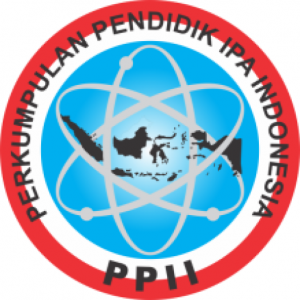The Phytase and Microbial Potential in Fish Feed: A Review
Authors
Kiki Haetami , Trisna Rosa Amanda , Abun AbunDOI:
10.29303/jbt.v25i1.8241Published:
2025-01-20Issue:
Vol. 25 No. 1 (2025): Januari - MaretKeywords:
Aquaculture, fish feed, grain phytic acid, microbial fermentation, phytase.Articles
Downloads
How to Cite
Downloads
Metrics
Abstract
Phytic acid is a form of phosphorus storage that can interfere with the absorption of starch and protein as an energy source from cereal grain flour. This review aims to explore the benefits of microbial fermentation processing in producing phytase enzymes to degrade phytic acid and improve the nutritional quality of grain-based fish feed. Through a comprehensive literature study approach, reviewing the mechanism of phytase production, characteristics of potential microbes, and fermentation process optimization strategies that can affect the effectiveness of enzymes in reducing phytic acid content. The results of the study showed that the microbes Bacillus subtilis, Aspergillus niger, and Lactobacillus plantarum have the potential to produce phytase. Optimization of environmental conditions in fermentation and phytase application is influenced by media composition, environmental parameters, microbial strains and fish species, becoming the key to the success of effective enzyme application. Optimal fermentation conditions range from pH 4.5-6.5 and temperature 45-55℃. Addition of phytase with a dose of 0.75-2 g/kg feed can increase growth. Phytase can increase digestibility and is effectively needed (range 500-1500 mg/kg) in farmed fish.
References
Abun, A. Widjastuti, T, & Rusmana D. 2020. Teknik Fermentasi menggunakan Mikroba BLS (Bacillus l., Lactobacillus sp., dan Sacharomyces c.) dan Formulasi Pakan Ayam Lokal. Media Kontak Tani Ternak 2(20):24-34. 1024198/mkttv2i2.28718
Abun A., Widjastuti T. & Haetami K. 2022. Effect of fermented shrimp shell supplementation of low protein diet on the performance of Indonesian native chicken. Journal of Applied Animal Research, 50 (1): 612–619. https://doi.org/10.1080/09712119.2022.2123810.
Amin M., Jusadi D. & Mokoginta I. 2012. The Use of Phytase Enzyme to Increase Phosphorus Bioavailability of the Diets and Growth Performance of Catfish (Clarias sp). Jurnal Saintek Perikanan, 6 (2): 53–62. https://doi.org/10.14710/ijfst.6.2.53-62.
Anggani D., Rusliadi & Putra I. 2021. Penambahan Enzim Phytase pada Pakan terhadap Pertumbuhan dan Kelulushidupan Ikan Nilem (Osteochilus hasselti) dengan Sistem Resirkulasi. Jurnal Ilmu Perairan (Aquatic Science), 9 (3): 207–14. https://garuda.kemdikbud.go.id/documents/detail/2539905.
Baruah K., Sahu N. P., Pal A. K. & Debnath D. 2004. Dietary Phytase: an Ideal Approach for a Cost Effective and Low-Polluting Aqua Feed. NAGA, World Fish Center Quarterly, 27 (3&4): 15–19. https://hdl.handle.net/20.500.12348/2061.
Beutler, A. L. 2009. The efficacy of Quantum TM phytase in laying hens fed corn-soybean meal based diets. Thesis. University of Saskatchewan, Saskatoon, Canada.
Gull I., Hameed A., Aslam M. S. & Athar M. A. 2013. Optimization of phytase production in solid state fermentation by different fungi. Afr. J. Microbiol. Res, 7 (46): 5207–12. https://doi.org/10.5897/AJMR2013.6136.
Haetami, K and Abun. 2024. Improving the Quality of Feed Ingredients using Enzymes Jurnal Perikanan dan Kelautan Vol 29(1): 107-112. https://jpk.ejournal.unri.ac.id/index.php/JPK/article/view/7071/pdf
Hardianto, T. & Sucipto. 2024. Manajemen Industri Budidaya Perikanan. PT Media Penerbit Indonesia. Medan. ISBN: 978-623-8702-31-2.
Indrayani, E., Runtuboi, D. Y. P., Ohee, H. L. & Kalor, J. D. 2023. Inovasi Akuakultur Dunia Teknologi Ikan. PT Media Penerbit Indonesia. Medan. ISBN: 978-623-09-9095-3. https://mediapenerbitindonesia.com/product/buku-referensi-inovasi-akuakultur-dunia-teknologi-ikan/
Khan S. A., Chaudhry H. R., Mustafa Y. S. & Jameel T. 2013. The effect of phytase enzyme on the performance of broilers. Biol Pakistan, 59: 99–106. https://doi.org/10.22069/psj.2013.1478.
Kosim M., Rachmawati D. & Samidjan I. 2016. Pengaruh Penambahan Enzim Fitase dalam Pakan Buatan Terhadap Laju Pertumbuhan Relatif, Efisiensi Pemanfaatan Pakan, dan Kelulushidupan Lele Sangkuriang (Clarias gariepinus). Journal of Aquaculture Management and Technology, 5 (2): 26–34. http://ejournal-s1.undip.ac.id/index.php/jamt.
Ningsih D. A., Kusdiyantini E. & Raharjo B. 2017. Uji Aktivitas Enzim Fitase yang Dihasilkan Oleh Aspergillus niger dan Neurospora sp. pada Kondisi Fermentasi yang Berbeda. Jurnal Biologi, 6 (4): 19–28. https://ejournal3.undip.ac.id/index.php/biologi/article/view/19597.
Panjaitan M. N. N., Yulianto T. & Miranti S. 2019. Pengaruh Penambahan Enzim Fitase dalam Pakan Buatan terhadap Efisiensi Pakan dan Pertumbuhan Ikan Kakap Putih
(Lates calcarifer, Bloch). Intek Akuakultur 3 (2): 11–21. https://doi.org/10.31629/intek.v3i2.1338.
Pratama A. P., Rachmawati D. & Samidjan I. 2015. Pengaruh Penambahan Enzim Fitase Pada Pakan Buatan terhadap Efisiensi Pemanfaatan Pakan, Pertumbuhan dan, Kelulushidupan Ikan Nila Merah Salin (Oreochromis niloticus). Journal of Aquaculture Management and Technology, 4 (4): 150–58. http://ejournal-s1.undip.ac.id/index.php/jamt.
Rachmawati D. & Samidjan I. 2014. Penambahan Fitase dalam Pakan Buatan sebagai Upaya Peningkatan Kecernaan, Laju Pertumbuhan Spesifik dan Kelulushidupan Benih Ikan Nila (Oreochromis niloticus). Jurnal Saintek Perikanan, 10 (1): 48–55. https://ejournal.undip.ac.id/index.php/saintek.
Selle P. H., Cowieson A. J. & Ravindran V. 2009. Consequences of calcium interactions with phytate and phytase for poultry and pigs. Livest Sci, 124: 126–41. https://doi.org/10.1016/j.livsci.2009.01.006.
Siahaan A., Mulyadi & Pamukas N. A. 2021. The Effect of Addition Phytase Enzymes with Different Doses to Feed on The Growth and Survival Rate of Hemibagrus nemurus with Recirculation System. Jurnal Universitas Riau. https://jom.unri.ac.id/index.php/JOMFAPERIKA/article/view/31388.
Siburian S. T. J., Putra W. K. A. & Miranti S. 2019. Efisiensi Pakan dan Pertumbuhan Ikan Bawal Bintang (Trachinotus blochii) dengan penambahan enzim fitase. Jurnal Intek Akuakultur, 3 (2): 1–10. https://doi.org/10.31629/intek.v3i2.1317.
Singh B., Kumar G., Kumar V. & Singh D. 2021. Enhanced Phytase Production by Bacillus subtilis subsp. subtilis in Solid State Fermentation and its Utility in Improving Food Nutrition. Protein Pept Lett, 28 (10): 1083–89. https://doi.org/10.2174/0929866528666210720142359.
Sintia N., Utomo D. S. C. & Yudha I. G. 2020. The Effect of Phytase Enzymes Addition on Artificial Feed on Hoven’s Carp Growth, Leptobarbus hoevenii (Bleeker, 1851). Jurnal Rekayasa dan Teknologi Budidaya Perairan, 8 (2): 991–1000. http://dx.doi.org/10.23960/jrtbp.v8i2.p991-1000.
Utami, W. M. 2020. Aktivitas Antioksidan Tempe Kacang Merah (Phaseolus vulgaris L.) sebagai Pangan Fungsional Antioksidan. Skripsi. Universitas Islam Negeri Syarih hidayatullah Jakarta.
Winata G. A., Suminto & Chilmawati D. 2018. Pengaruh Penambahan Enzim Fitase dengan Dosis yang Berbeda pada Pakan Buatan terhadap Efisiensi Pemanfaatan Pakan, Pertumbuhan, dan Kelulushidupan Ikan Sidat (Anguilla bicolor). Jurnal Sains Akuakultur Tropis, 2 (1): 11–19. https://doi.org/10.14710/sat.v2i1.2462.
Yuanita L., Puspita A., Surodjo S., Hidayati S., Al Amin F. & Budiman A. 2012. Isolasi, Pemurnian dan Karakterisasi Fitase Bacillus subtilis dari Holiwood Gresik. Berkala Penelitian Hayati, 15 (2): 113–19. https://doi.org/10.23869/263.
Yusra dan Efendi Y. 2019. Kemampuan Bacillus subtilis VITNJ1 dari Saluran Pencernaan Ikan Nila dalam Memproduksi Enzim Protease. Jurnal Riset Akuakultur, 4 (2): 87–93. http://ejournal-balitbang.kkp.go.id/index.php/jra.
Zulaeha S., Rachmawati D. & Samidjan I. 2015. Pengaruh Penambahan Enzim Fitase pada Pakan Buatan terhadap Efisiensi Pemanfaatan Pakan, dan Pertumbuhan Ikan Kerapu Bebek (Cromileptes altivelis). Journal of Aquaculture Management and Technology, 3 (4): 35–42. https://ejournal3.undip.ac.id/index.php/jamt/article/view/9803
License
Copyright (c) 2025 Kiki Haetami, Trisna Rosa Amanda, Abun Abun

This work is licensed under a Creative Commons Attribution 4.0 International License.

Jurnal Biologi Tropis is licensed under a Creative Commons Attribution 4.0 International License.
The copyright of the received article shall be assigned to the author as the owner of the paper. The intended copyright includes the right to publish the article in various forms (including reprints). The journal maintains the publishing rights to the published articles.
Authors are permitted to disseminate published articles by sharing the link/DOI of the article at the journal. Authors are allowed to use their articles for any legal purposes deemed necessary without written permission from the journal with an acknowledgment of initial publication to this journal.


























